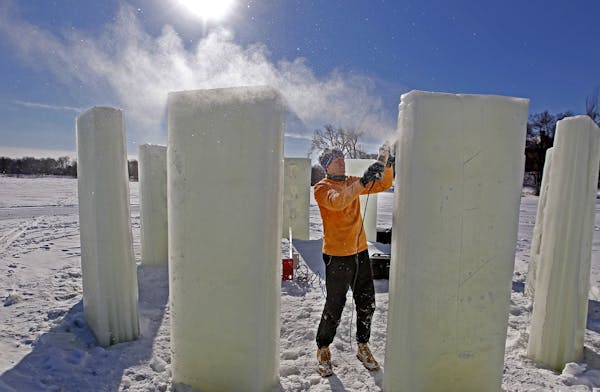The walleye harvest on Lake Mille Lacs, the state's most popular walleye fishing destination, will be cut to the lowest level ever this summer.
The Department of Natural Resources said Friday that the harvest quota will be just 60,000 pounds beginning in May — a 90 percent drop from the 600,000 pounds allowed less than 10 years ago.
The new quota is also less than a quarter of the 250,000 pounds allowed just last year.
State officials considered shutting down the Mille Lacs walleye harvest completely, said DNR Fisheries Chief Don Pereira. But it was decided that the number of spawning fish the restriction would save was outweighed by the turmoil it would cause anglers and area businesses.
"We told the DNR 12 years ago this day would come due to the lake's mismanagement,'' said Terry Thurmer, owner of Terry's Boat Harbor on Mille Lacs. "This never should have happened.''
Thurmer's business is one of the many that count on the annual arrival of thousands of anglers to the lake, which is only 90 minutes from the Twin Cities.
Growing concern over Mille Lacs' declining walleye numbers led the DNR and Chippewa band officials — who have jointly managed the lake since 1997 — to agree to the ultralow harvest.
Particularly worrisome to fisheries officials is the lack of small walleyes in Mille Lacs, especially males, which in recent years have disappeared en masse before reaching spawning age.
Not since 2008 has a Mille Lacs walleye year-class survived to maturity in sufficient numbers to sustain a healthy fishery.
Large eating small
The lake might have too many large walleyes, officials say, thanks to harvest restrictions that have protected outsized fish for more than a decade.
Those big walleyes might be feasting on the small walleyes.
Chippewa who net the lake in spring also target the lake's smaller walleyes, a sore spot for many anglers.
"You can't net spawning fish while also creating an eating machine by protecting big fish and expect young walleyes to do well,'' Thurmer said.
The relatively recent influx of zebra mussels and other invasive species might contribute to the lake's low walleye numbers, Pereira said.
Officials are also concerned about the lake's burgeoning smallmouth bass and northern pike populations, which might be preying on small walleyes.
As a result, Pereira said, the northern quota will double this year to 100,000 pounds, with equal allocations between the state and the Chippewa bands.
Whether smallmouth bass harvest regulations on Mille Lacs will change is less certain. An attempt last year by the DNR to encourage their harvest by anglers largely failed, in part because the fish traditionally aren't prized as table fare.
Still, "everything's on the table,'' Pereira said.
Other possibilities include extending the springtime night fishing ban to slow the walleye harvest.
The lake also could be reopened to northern pike spearing, in an attempt to reduce their numbers, Pereira said.
"I don't see why I wouldn't put northern spearing on the table for consideration,'' Pereira said. "It might be a good thing for the local economy.''
Meanwhile, Pereira said tribal officials will encourage band members to spear more and net less this spring. Spearing would allow band members to target the lake's larger walleyes.
Officials note that while a 60,000-pound Mille Lacs walleye quota is a record low, actual harvests in some years have come in almost as low. In 2003, for example, state anglers took only 66,492 pounds of walleye.
However, in some recent years the numbers have been far larger.
In 2006 and 2007, more than 462,000 pounds were taken, and as recently as 2011 the lake yielded 230,000 pounds.
The size and number of walleyes that anglers will be allowed to keep in the coming season won't be determined until later this month, after DNR fisheries managers meet with Mille Lacs area resort operators and other business owners.
Pereira said the Mille Lacs walleye bag and size limits likely will be similar to last year, when anglers were restricted to two walleyes between 18 and 20 inches.
State-regulated hook-and-line anglers will get 42,900 pounds of the quota; 17,100 pounds will be reserved for the eight Minnesota and Wisconsin Chippewa bands that net the lake in spring.
Last year, nonband anglers were allocated 178,750 pounds.
Staff writer Dennis Anderson contributed to this report.

Baseball Metro Player of the Year packs up his five tools and leaves

Prep baseball 2024: 35 Minnesota stars who the recruiters covet
Police searching for St. Paul home intruder who raped, robbed woman

Friend heard money, relationship woes from man tied to Chanhassen killing who took his own life

